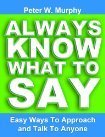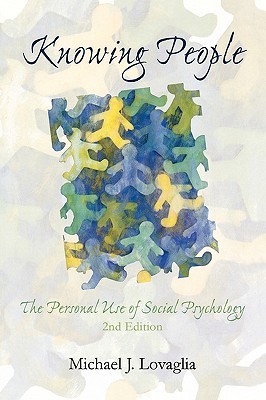
Read People Like a Book: How to Analyze, Understand, and Predict People’s Emotions, Thoughts, Intentions, and Behaviors
Book Description
Unlock the secrets of human connection and master the art of reading emotions like a seasoned detective. In 'Read People Like a Book,' Patrick King unveils powerful techniques that reveal the hidden motives and intentions behind every glance, gesture, and subtle shift in tone. This gripping guide transforms the mundane into a treasure map of insight, allowing anyone to predict behaviors and navigate complex social landscapes with ease. Friends, enemies, clients—everyone around you is a chapter waiting to be interpreted. How well do you know the people who shape your world?
Quick Book Summary
"Read People Like a Book" by Patrick King is an incisive guide to decoding the emotional and psychological cues that people exhibit in everyday interactions. Drawing on principles from psychology, behavioral analysis, and communication, the book equips readers with actionable strategies for interpreting body language, verbal nuances, facial expressions, and unconscious behaviors. King demystifies how motives and intentions can be uncovered through attentive observation and critical thinking. Whether for personal relationships or professional settings, this guide sheds light on reading between the lines and accurately predicting how others feel and what they will do next. Ultimately, it empowers readers to foster empathy, enhance social intelligence, and navigate complex social environments with confidence.
Summary of Key Ideas
Table of Contents
Mastering Observation Skills
The journey begins with mastering observation skills. Patrick King argues that reading people well is less about having a sixth sense and more about developing focused awareness. Readers learn to cultivate active observation, systematically noting gestures, micro-expressions, tone, and context. King emphasizes removing assumptions and anchoring perceptions in what is objectively present. This approach lays the groundwork for unbiased analysis and fosters an environment where subtle social details are not overlooked.
Decoding Nonverbal Communication
A foundational pillar is decoding nonverbal communication. The book dives deep into the language of body posture, facial expressions, eye contact, and gestures—elements that reveal far more than spoken words. King equips readers with a toolkit for identifying congruence or disparity between what is said and what is shown. By understanding how emotions leak through physical behaviors, individuals can distinguish genuine feelings from pretense and discover hidden attitudes that direct interaction outcomes.
Understanding Emotional Triggers
Moving beyond external signals, the author explores emotional triggers and their significance in interpreting behavior. King illustrates how people’s responses are often dictated by deep-rooted patterns of emotion, stemming from personal beliefs and past experiences. By identifying these triggers, readers can grasp why individuals react intensely or unexpectedly in certain situations. This awareness leads to more empathetic and constructive communication, as responses can be tailored to respect underlying sensitivities or insecurities.
Interpreting Motivations and Intentions
Interpreting motivations and intentions becomes the next natural step. The book outlines frameworks for analyzing why someone acts a certain way, examining both conscious aims and unconscious drives. King discusses common motivators—such as desire for approval, control, or belonging—and how these influence people’s choices and language. Through examples and exercises, readers practice forming accurate interpretations while avoiding common pitfalls like projection and bias.
Predicting Behavioral Patterns
The final theme centers on predicting behavioral patterns. By piecing together observations, decoded signals, and understanding of emotional motivations, readers are taught to anticipate how individuals are likely to behave in various circumstances. King offers tips for identifying recurring patterns and adapting one’s communication strategies accordingly. Ultimately, the book aims to empower readers to confidently manage personal and professional relationships, using their new skills to foster trust, connection, and effective collaboration.
Download This Summary
Get a free PDF of this summary instantly — no email required.





